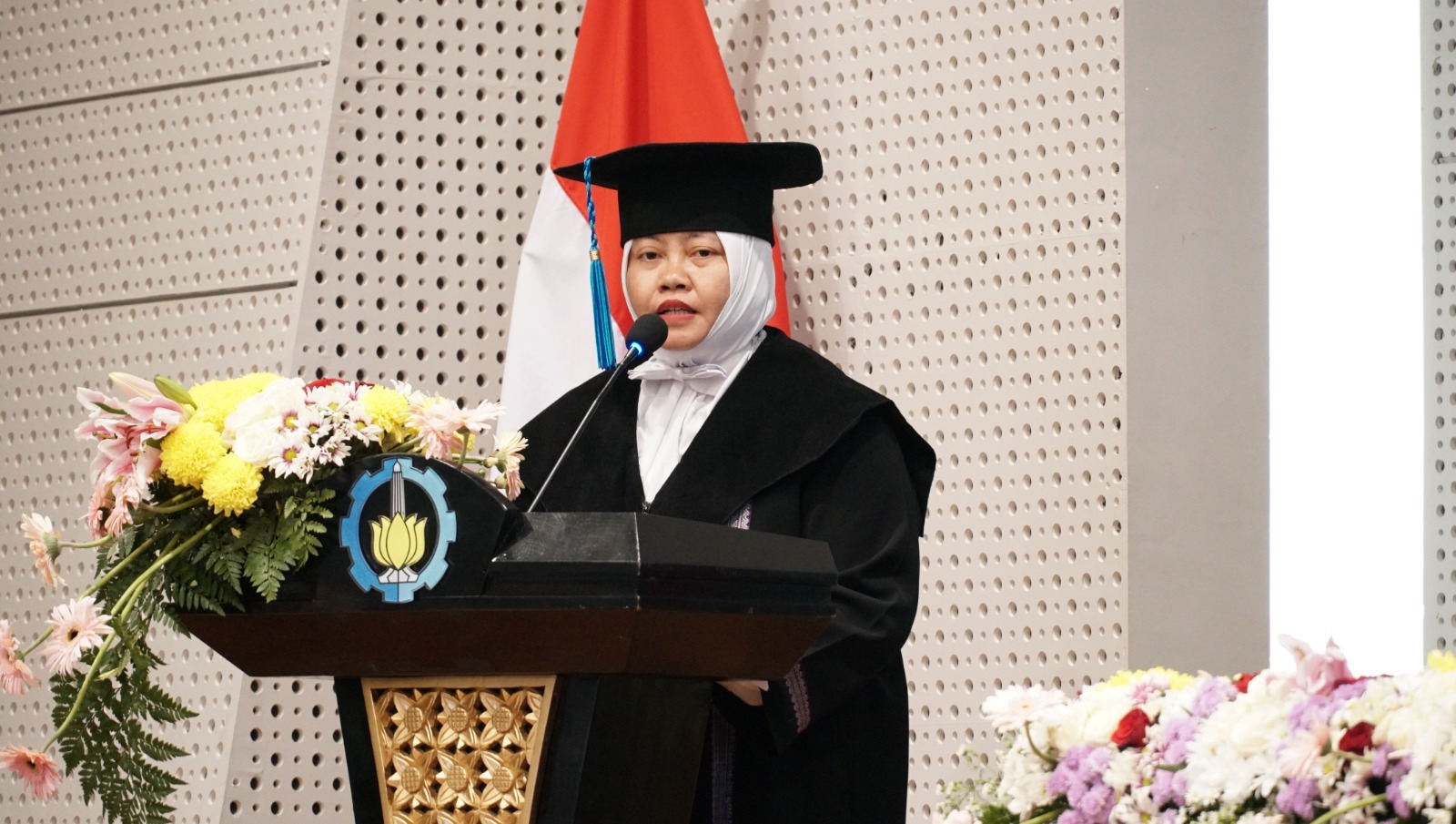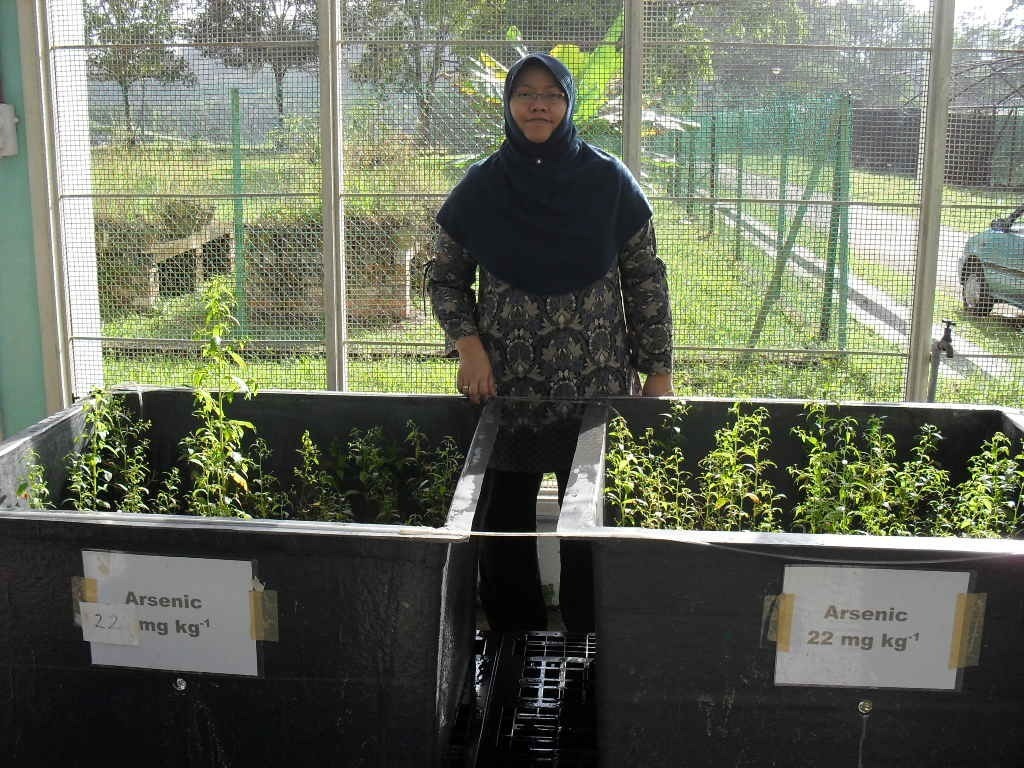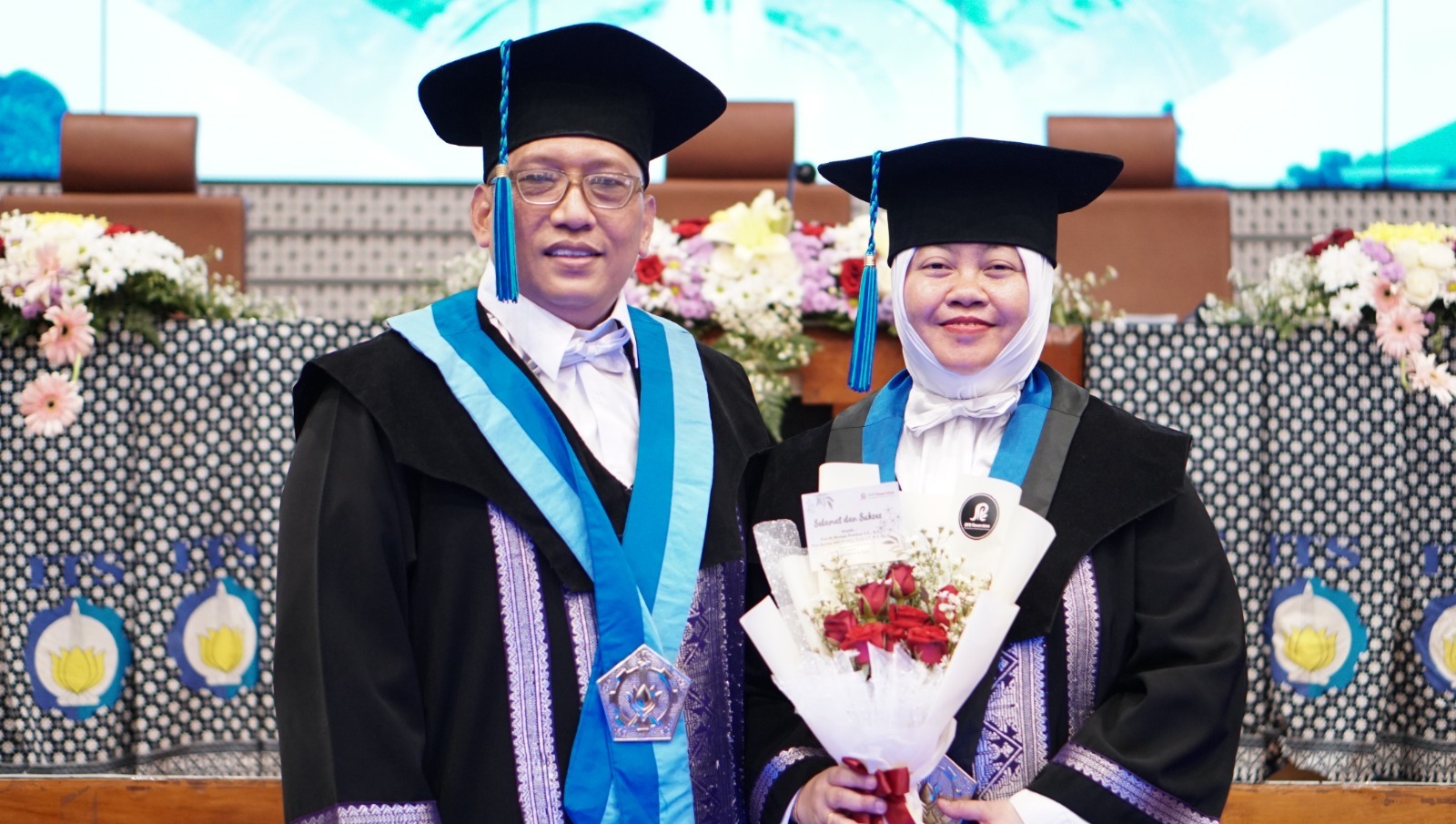Restoring the Environment, ITS Professor Innovates Bioremediation and Phytoremediation Technology

Prof. Harmin Sulistiyaning Titah ST MT PhD when reading her scientific oration at the inauguration of ITS Professor
ITS Campus, ITS News – Environmental quality restoration needs to be boosted in order to minimize the level of environmental pollution. This encouraged the 198th Professor of Institut Teknologi Sepuluh Nopember (ITS) Prof. Harmin Sulistiyaning Titah ST MT PhD to initiate bioremediation and phytoremediation technology as an effort to restore environmental quality in Indonesia.
The professor from the ITS Department of Environmental Engineering said that the management of natural resources that does not pay attention to environmental sustainability causes environmental pollution. Pollution in an environment shows that there is a decrease in the quality of the environment. Whereas the earth, water, and natural resources contained therein are controlled by the state and used for the prosperity of the people. “Therefore, it is necessary to restore the quality of the environment,” said Harmin in her inaugural oration as ITS professor.
One of the efforts initiated by Harmin in restoring polluted areas from organic and inorganic pollutants can be through remediation. This effort utilizes physical, chemical, biological, and a combination of the three technologies. However, of all these technologies, biological environmental recovery technology requires lower costs. “The biological efforts are phytoremediation by utilizing plants and bioremediation by utilizing microorganisms for environmental recovery,” she explained.
The Malang-born researcher said that both efforts use green technology because it is environmentally friendly and does not require a lot of money like other methods. In fact, based on her research, green technology can cut costs by 30 percent without causing other negative effects. “The natural and easy-to-implement recovery process makes bioremediation the right choice in environmental recovery,” said the ITS alumni.
There are three general principles in the application of bioremediation including biostimulation, bioaugmentation, and natural attenuation. Biostimulation is done by stimulating indigenous microbes such as adding nutrients such as carbon, nitrogen, phosphate, and potassium. Then, bioaugmentation adds exogenous microorganisms. Finally, natural attenuation manages intrinsic conditions such as high microorganism populations, available nutrients, favorable environmental conditions, and contaminants that are easily biodegradable.

ITS 198th Professor Prof. Harmin Sulistiyaning Titah ST MT PhD when reviewing plants as the object of her research in the green house
The mother of two children took action in her research by implementing bioremediation of diesel and heavy metals in the shipbreaking area. The first step was to isolate microorganisms that have the ability to degrade pollutants in a biomolecular manner. Then, the results of bacterial isolates were tested for bacterial morphology such as shape, size, and color. As a result, five types of bacteria were found to degrade pollutants.
Furthermore, Harmin explained, the method used in the screening test is the streak plate method by growing bacterial isolates on nutrient media polluted with diesel fuel. As a result, the bacterial growth showed good bacterial growth and could survive at this diesel concentration. “The conclusion is that bacteria can be utilized as diesel degraders,” said Harmin.
After isolates are obtained from polluted areas, he continued, toxicity testing of pollutants against bacteria is carried out to obtain bacterial isolates that are resistant to these pollutants. The method used to determine the reaction of bacteria to heavy metals is by direct observation of affected bacterial cells. “As a result, bioremediation can stimulate between augmentation and biostimulation and produce a decrease of up to 90 percent in total petroleum hydrocarbons,” said the Professor of Environmental Biological Recovery.
Meanwhile, phytoremediation is an effort to absorb pollutants mediated by plants. To select plants for phytoremediation, the pollutant compound is first determined. Plants with the ability to live in areas polluted with hydrocarbon compounds are indicated to be able to live in extreme environments. This research chose phytoremediation efforts by utilizing plants that can take up heavy metals.

Prof. Harmin Sulistiyaning Titah ST MT PhD and Prof. Herman Pratikno ST MT PhD received their professorships together.
The ability of mangrove plants to absorb heavy metals from the environment suggests that they can act as phytoremediators in metal-contaminated areas. However, it is better to utilize five different species of deep plants such as vines, shrubs, and woody plants. “The goal is that the different plant roots can reach the polluted area and the addition of the appropriate bacterial consortium can increase the effectiveness of remediation results,” Harmin explained.
The wife of Prof. Herman Pratikno ST MT PhD said that bacteria always live together with humans. Human daily activities always produce waste. “The results of this research are expected to restore the polluted environment and accelerate the process of restoring it,” explained the doctoral alumnus of Universiti Kebangsaan Malaysia.
Harmin’s activeness in studying since childhood is inseparable from her father’s background as a lecturer in law. With the support of her husband to actively study together from masters to doctorate, Harmin is compact in taking care of the family and pursuing a career until she was successfully confirmed as a professor at ITS with her husband. “Hopefully I can continue to carry out the tridarma of higher education optimally and gratefully,” said the professor who was met after being inaugurated. (ITS PR)
Reporter: Silvita Pramadani
Translator: Niza H Z R
Related News
-
Supporting Defense in Indonesia, ITS Professor Creates Anti-Radar Material
Professor Dr. Mashuri SSi MSi, while delivering his academic oration on anti-radar materials during the ITS Professorial Inauguration. ITS
March 29, 2024 17:03 -
Gains Up 300 Percent, ITS Targets Increase in Scholarship Recipients
ITS Campus, ITS News – In the period 2020 – 2023, the scholarship disbursement budget collected by Institut Teknologi
March 29, 2024 17:03 -
Gains Up 300 Percent, ITS Targets Increase in Scholarship Recipients
ITS Campus, ITS News – In the period 2020 – 2023, the scholarship disbursement budget collected by Institut Teknologi
March 29, 2024 17:03 -
ITS students attend an international oil and gas conference in Saudi Arabia
ITS Campus, ITS News – Students from the Department of Ship Systems Engineering at Institut Teknologi Sepuluh Nopember (ITS)
March 29, 2024 17:03
